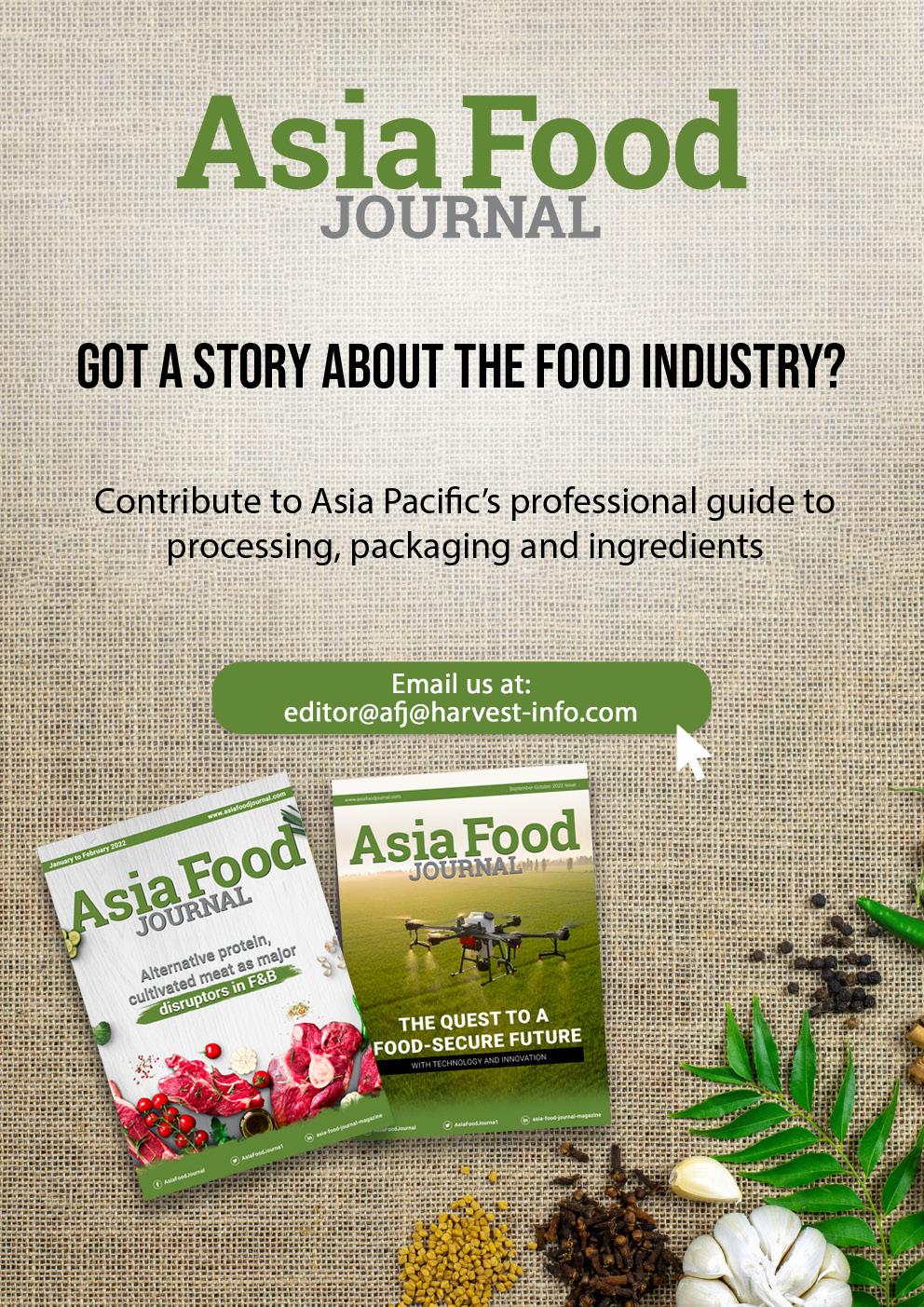




In this issue, we tackle how bottlenecks in the logistics and supply chain industry are impacting the food and beverage sector - raising food prices and contributing to food security issues that have plagued consumers for years.
Technology and market dynamics continue to impact the supply chain. We hope you take this opportunity to learn more about how to leverage blockchain with your partners in the supply chain to overcome these challenges.
As regulatory compliance and industry standards continue to evolve, so must supply chains. With technology and price volatility impacting supply chain efficiency and effectiveness, can technology be the answer?
We hope you enjoy this month’s issue of the Asia Food Journal!
Cath IsabedraEditor
Keen Whye Lee
Publisher

Cath Isabedra Editor editor-afj@harvest-info.com
Danico Acosta Layout and Design
OPERATIONS
Mari Vergara Head of Operations mari@asiantvawards.com
SALES
Simon Lee Hong Kong, U.S.A. sales@harvest-info.com
Chua Chew Huat Asia Pacific sales-sg@harvest-info.com
Erhardt Eisenacher Europe info@eisanacher-medien.de
Lali Singson mktg@harvest-info.com

Michael Magsalin tech@harvest-info.com
150 Orchard Road #07-05 Orchard Plaza Singapore 238841
AsiaFoodJournal
AsiaFoodJourna1 asia-food-journal-magazine


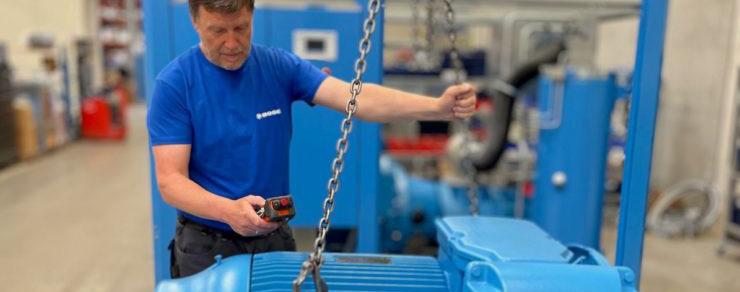




Sudhir Joshi, Product Development Programme Coach at the University of California, Berkeley, said: “The rise of meat alternatives is significant. The market is poised for rapid growth. While the existing technologies offer a major opportunity for innovation, the main challenges in this sector remain cost and scale.”

“This new white paper provides a comprehensive review of current and upcoming technologies. It also offers insights into adoption, market potential, challenges and the opportunities for future development.”
Flavio Garofalo, Givaudan’s Global Director, Culinary & Plant Attitude, said: “Givaudan’s wide-eyed-thinking and passion for creating outstanding future food experiences is at the heart of our ongoing collaboration and research with University of California, Berkeley. We have an insatiable appetite for knowledge and understanding that ultimately leads to innovative breakthroughs.”
Givaudan is at the forefront of the meat-alternative movement but recognises that to create delicious new products, companies need to be agile, efficient, and innovative. Flavio continues: “Only by working together can we build the eco-systems necessary to develop the meat and fish alternative proteins of tomorrow. Our ongoing research with Berkeley is a great example of the kind of collaboration that will allow us to imagine the future of alternative proteins.”
In addition to its partnership with Berkeley, Givaudan is also actively working with some of the latest technologies in collaboration with Bühler and Migros, with whom it has formed the Cultured Hub in Kemptthal, Switzerland, working on cultured meat, cultured fish and seafood, and precision fermentation.
White paper offers insights on the latest innovations and opportunities for development
Givaudan has launched its latest white paper entitled ‘The Protein Horizon: the landscape of alternative protein technologies enabling future food experiences,’ its fourth collaboration with the University of Berkeley, California. This paper provides cutting-edge information on current, emerging and future technologies for manufacturers producing meat and fish alternatives.
No longer considered niche, the growth of plant-based alternatives has been fuelled by rising consumer desire for healthier food products that have less impact on the planet. To meet the demand in volume and desired product characteristics, constant innovation and new technologies are necessary.
The Protein Horizon research takes a future perspective, highlighting the benefits of emerging 3D printing technology, the ‘near future’ techniques of cultured meat, and Mycelium biomass fermentation producing fungi-derived protein. It also looks further over the horizon to lab-scale technologies such as shear cell, which is set to attract significant investment. Given no single technology is the ‘silver bullet’, collaboration across companies and organisations is essential for creating delicious and nutritious meat alternatives.
The Hub is part of Givaudan’s extensive network of alternative protein innovation centres across four continents, including MISTA in California, the Protein Innovation Centre in Singapore, the Protein Hub in Zurich, and soon, the Tropical Food Innovation Lab in Brazil. By fostering collaboration with customers and other companies, from start-ups to leaders in the field, and building our innovation pipeline and proprietary technologies, Givaudan has become the partner of choice for co-creating new meat alternative products.
Arla Foods Ingredients has launched a new concept that combines whey protein and electrolytes, targeting two of the most important sports nutrition goals — rehydration and restoration.
A fluid loss of just two percent can reduce athletic performance by around 10 percent.1 It’s important to understand that rehydration is fundamental to sports nutrition. Athletes and sports enthusiasts must increase awareness of the importance of replenishing electrolytes. Science also demonstrates the importance of restoration, with protein intake between sessions driving optimal muscle recovery.2
Unsurprisingly, active consumers are heavily focused on rehydration and restoration, with 43 percent looking for added protein in exercise related-products and 28 percent favoring those with electrolytes.3
Arla Foods Ingredients’ new ‘Rehydrate and Restore’ concept demonstrates how brands can meet both needs without sacrificing taste. The clear, refreshing RTD beverage solution features Lacprodan® SP-9213, a whey protein isolate that retains its functionality when combined with electrolytes.
Packing 25g of whey protein into a convenient 500ml bottle, it allows on-pack claims such as high-protein4, as well as “contains electrolytes”, low sugar, and low lactose. With a light refreshing taste, it is optimized for various flavors.
Mathias Toft Vangsoe, Sales Development Manager, Health & Performance Nutrition, at Arla Foods Ingredients, said: “The high-protein and hydration trends are two of the most important drivers in sports nutrition right now – as demonstrated by the popularity of functional waters. This inspirational new concept shows how brands can help consumers simultaneously rehydrate and recover with beverages that contain both electrolytes and high-quality protein. This is a combination that many of our customers have asked us for, and we’re delighted to help them meet two of the biggest needs in the sports nutrition space.”
‘Rehydrate and Restore’ will be on show at SupplySide West (2nd and 3rd November in Las Vegas). Arla Foods Ingredients will also showcase two other concepts at its booth (#5853):
• ‘Protein in Every Layer’: An indulgent bar with protein throughout, featuring highquality whey and milk protein ingredients from the company’s Lacprodan® range
• ‘Whey more powerful’: A demonstration of the sports nutrition applications of Lacprodan® BLG-100 – a pure beta-lactoglobulin that contains 45% more leucine than commercially available whey protein isolates.

Prinova Europe is launching a potent new plant-based antimicrobial that inhibits the growth of yeasts, moulds, and bacteria, addressing the increasing demand for natural preservatives.

PlantGuard ™ AM is the latest addition to the company’s botanical-derived range of preservatives, which enable manufacturers to use natural cleanlabel solutions to minimise food waste. The portfolio will make its first live show appearance at Food ingredients Europe (6-8 December).
PlantGuard ™ is a proprietary blend of
natural extracts from plants that have been used in nutritional supplements for many years due to their antioxidant properties. It is highly effective for extending freshness and shelf life, delaying the onset of rancidity, hindering microbial growth, and conserving flavour and colour.
The heat-stable, neutral-tasting preservatives perform well against synthetic alternatives in a range of foods and beverages. PlantGuard ™ AM, which can be used in applications including dairy, fish, meat, fruit, vegetables, cereals, and juices, will be showcased at FiE alongside the antioxidant PlantGuard ™ FS (fatsoluble for high-fat applications such as pastries, fried foods, and mayonnaise) and WS (water-soluble for lower-fat products including bread, reduced-fat spreads, and sauces).
Since PlantGuard ™ can be used in such a broad range of applications, it can replace artificial preservatives across a number of product lines. Prinova’s technical team works with customers to help them select the optimal solution for their brands. The low dose rate and cost-in-use that compares well with alternatives enable further economies of scale.
At FiE, Prinova Europe will be debuting two new concepts – cookies with PlantGuard™ FS and grissini with PlantGuard™ FS and WS – demonstrating how PlantGuard™ can be used to create on-trend products that meet the growing consumer demand for naturality.
James Street, Director of Marketing EMEA & APAC at Prinova, said:
“Global macro trends have been developing in the natural space for some time, and the pandemic has only heightened consumer awareness of food’s impact on wellbeing, driving a surge in interest for product transparency and the shift away from artificial preservatives, E numbers, and long product labels.”
He added, “We created PlantGuard™ as a direct result of manufacturer interest in natural antioxidants to meet this increasing demand for simple, authentic ingredients. We’re excited to provide a solution that leverages the functionality of natural ingredients to tick all the boxes for manufacturers and consumers – cleanlabel, less food waste, longer shelf-life – in fresh produce and packaged goods.”
Insufficient time, particularly when on the go and in school or work settings, is most prevalent in Asia (25 percent) and among consumers between 16 and 44 years old. Meanwhile, two in five consumers in the US and Europe are more likely to be hampered by the lack of discipline, possibly because the many concerns around the pandemic and economic instability have taken precedence.
As well as making daily life more stressful, the COVID-19 pandemic accelerated an existing trend towards preventative health, and consumers became even more focused on reducing the risk of potential diseases to maximise overall enjoyment of life. According to the Consumer Wellness Research, protection against major illnesses (40 percent), the ability to live life to the fullest (39 percent) and spend quality time with loved ones (33 percent) are now the top reasons for staying healthy.
Commenting on the findings, Charlotte Ortiz, Nutiani Global Brand Marketing Manager, says the prolonged impact of COVID-19 will likely have a permanent effect on consumer health and wellness priorities.
Latest findings of the study by Nuitiani reaffirm that most consumers view health holistically and want to improve their well-being via nutrition, but face a lack of time and have low trust in existing products.
Most consumers believe it is important to eat a well-balanced diet to prevent major illnesses, but lifestyle challenges prevent them from doing so, according to a recent global consumer wellness study by B2B nutrition brand Nutiani.

The IPSOS Nutiani Consumer Wellness Research, jointly conducted by leading market research agency IPSOS and Nutiani, global dairy company Fonterra’s health and well-being brand, examines the perspectives of 5,000 consumers across the full spectrum of health.
Most global consumers (90%) are adopting a holistic mindset and believe good health involves not just being physically well but looking after all aspects of wellbeing. Despite most saying they actively take steps to manage their health, barriers stemming from lifestyle choices are hampering progress.
Nutrition is seen as essential to overall well-being, with 88 percent of consumers believing well-balanced diets are important to preventing major illnesses. However, in practice, only 56 percent choose to eat a healthy diet to maintain their well-being.
Consumers who choose not to adopt nutrition solutions to support well-being goals say they do not believe the health claims made by existing products and perceive them to be too costly, resulting in a preference to rely on their natural diets (34 percent).
Barriers to action remain for others. Four in five consumers expressed that they face challenges in managing their well-being, particularly in Asian markets such as China and South Korea. Lack of discipline (42 percent), cost (31 percent) and busy lifestyles (22 percent) are key deterrents.
“It is clear that consumers are prioritising their health and well-being, and preventative action is here to stay. The fact that many struggle to manage their nutrition as well as they would like suggests that existing products are not effectively meeting their needs. Coupled with consumers’ determination and interest in holistic well-being, there is a white space opportunity for brands to start delivering accessible and convenient nutrition solutions, such as ready-to-drink protein beverages, to support them in achieving their health goals,” Ortiz says.
Dan Luo, Acting Director Active Living at Fonterra, says the future of health and nutrition will belong to brands that can identify and bridge existing gaps and target unmet needs through innovative offerings.
“We know consumers today care deeply about their nutrition and are looking for simple products they can trust. The growth in the physical, mental and inner well-being nutrition market is significant if brands can overcome consumer barriers like convenience and credibility, and stay ahead of evolving needs across different dimensions of health,” Luo adds.
from unlocking their health goals
Eriez® announces its manufacturer’s representative agency PT Jayatech Palmindo, a leading equipment and service provider for the palm oil industry, recently opened new branch locations in Pekanbaru, Sampit, and Pontianak, Indonesia. PT Jayatech Palmindo continues to serve customers from its head office in Medan, where they offer equipment service and repairs.
“The expansion of PT Jayatech Palmindo throughout Indonesia supports Eriez’ dedication to growing our reach in the APAC region,” says Business Development Engineer and Account Manager Craig Onley.

“We are committed to making our innovative processing solutions more accessible to solve the toughest application challenges encountered by customers in this part of the world.”
PT Jayatech Palmindo supplies and services Eriez metal detection, magnetic separation, and vibratory equipment, which is widely used throughout the palm oil industry to eliminate contamination and improve processing efficiency.
Onley adds, “Eriez is proud to work with reps such as PT Jayatech Palmindo to bring our state-of-the-art products straight to customers’ doorsteps, regardless of their location.” He concludes, “The PT Jayatech Palmindo team, with its intense focus on product optimisation and superior customer service, is poised for continuous growth and success.”
Eriez®
On-TheGround Presence to Better Serve the Indonesia Palm Oil Industry
NESCAFÉ, Nestlé’s largest coffee brand and one of the world’s favorite coffees, outlined today its extensive plan to help make coffee farming more sustainable: the NESCAFÉ Plan 2030. The brand is working with coffee farmers to help them transition to regenerative agriculture while accelerating its decade of work under the NESCAFÉ Plan.
The brand is investing over one billion Swiss francs by 2030 in the NESCAFÉ Plan 2030. This investment builds on the existing NESCAFÉ Plan as the brand expands its sustainability work. Nestlé’s regenerative agriculture financing supports it following the Group’s commitment to accelerate the transition to a regenerative food system and its ambition to achieve zero net greenhouse gas emissions.
“Climate change is putting coffee-growing areas under pressure,” said David Rennie, Head of Nestlé Coffee Brands. “Building on 10 years’ experience of the NESCAFÉ Plan, we’re accelerating our work to help tackle climate change and address social and economic challenges in the NESCAFÉ value chains.”
Rising temperatures will reduce the area suitable for growing coffee by up to 50 percent by 2050. At the same time, around 125 million people depend on coffee for their livelihoods, and an estimated 80 percent of coffeefarming families live at or below the poverty line. Action is needed to ensure the long-term sustainability of coffee.
“As the world’s leading coffee brand, NESCAFÉ aims to have a real impact on coffee farming globally,” said Philipp Navratil, Head of Nestlé’s Coffee Strategic Business Unit. “We want coffee farmers to thrive as much as we want coffee to have a positive impact on the environment. Our actions can help drive change throughout the coffee industry.”

Regenerative agriculture is an approach to farming that aims to improve soil health and fertility and protect water resources and biodiversity. Healthier soils are more resilient to the impacts of climate change and can
increase yields, helping improve farmers’ livelihoods.
NESCAFÉ will provide farmers with training, technical assistance, and high-yielding coffee plantlets to help them transition to regenerative coffee farming practices. Some examples of regenerative agriculture practices include the following:
• Planting cover crops helps to protect the soil. It also helps add biomass to the soil, increasing soil organic matter and thus soil carbon sequestration.
• Incorporating organic fertilizers contributes to soil fertility, which is essential for good soil health.
• Increasing the use of agroforestry and intercropping contributes to biodiversity preservation.
• Pruning existing coffee trees or replacing them with disease and climatechange-resistant varieties will help rejuvenate coffee plots and increase yields for farmers.
Focusing on origins from where NESCAFÉ sources 90 percent of its coffee
NESCAFÉ will work with coffee farmers to test, learn and assess the effectiveness of multiple regenerative agriculture practices. This will focus on seven key origins from which the brand sources 90 percent of its coffee: Brazil, Vietnam, Mexico, Colombia, Côte d’Ivoire, Indonesia, and Honduras.
NESCAFÉ aims to achieve:
• 100% responsibly sourced coffee by 2025
• 20% of coffee sourced from regenerative agricultural methods by 2025 and 50% by 2030 as part of Nestlé’s ambition for its key ingredients
Piloting a financial support scheme in Mexico, Côte d’Ivoire, and Indonesia to accelerate the transition to regenerative agriculture
NESCAFÉ is committed to supporting farmers who take on the risks and costs associated with the move to regenerative agriculture. It will provide programs that aim to help farmers improve their income as a result of that transition. In Mexico, Côte d’Ivoire, and Indonesia, NESCAFÉ will pilot a financial support scheme to help farmers accelerate the transition to regenerative agriculture.
Plan 2030 to help drive regenerative agriculture, reduce greenhouse gas emissions and improve farmers’ livelihoods
Expansion of the product portfolio in the medium performance range
Theegarten-Pactec has acquired shares in the Turkish mechanical engineering company MAKREV Packaging with effect from September 1st, 2022. With this acquisition, the packaging specialist intends to respond even better to customers who require packaging solutions for the medium performance range.
Theegarten-Pactec, a packaging specialist for small-sized confectionery products based in Dresden, Germany, acquired a stake in the Turkish company MAKREV Packaging on September 1st. The Istanbulbased company was founded in 1998 and has since been manufacturing intermittent chocolate and jelly packaging machines as well as complete automation and feeding systems. MAKREV’s machines achieve a packaging output of up to 900 pieces per minute for jelly products and hard candy and 400 pieces per minute for chocolate products.

Through the acquisition, Theegarten-
Pactec aims to complement its product portfolio and become more attractive to customers in the mid-performance and price segments below the highperformance machines built in Dresden. “This step is exactly the right one for our long-term success,” says Markus Rustler, CEO of Theegarten-Pactec. “MAKREV machines are solidly constructed and produced to the highest quality. They have an impeccable reputation in the industry.”
MAKREV, in turn, is expected to benefit from the Dresden-based packaging specialist’s worldwide sales and service network as a result of the cooperation. So far, MAKREV has mainly been active in the Middle East, North Africa, the CIS, and India.
In addition to the sales cooperation, Theegarten-Pactec CEO Markus Rustler will take on tasks in MAKREV’s management. As a board member, he will actively shape the company’s further development in the future. Despite the cooperation, both companies will continue to operate independently on the market and serve the different market segments.
“Through this cooperation, we are, on the one hand strengthening the Dresden location as a place of know-how for the construction of high-performance machines. On the other hand, with MAKREV’s market access, we will also be able to offer new customers competitive solutions from the medium performance range that meet our quality standards in the future,” Markus Rustler concludes.
SIG Asia Pacific South: leading packaging solutions provider expands product portfolio - new opportunities for the F&B industry
SIG, one of the world’s leading packaging solutions providers, has further expanded its product portfolio in the region with the acquisition of Scholle IPN and Evergreen Asia, offering manufacturers in the F&B industry even more opportunities to position their products optimally for the needs of the markets and consumers while cementing the company’s position as a global leader in innovative and sustainable packaging for food and beverages.
“As the leading packaging solutions provider, we at SIG are delighted about our broadened portfolio with Scholle IPN and Evergreen Asia becoming part of the SIG family. Asia Pacific South is one of the fastest growing regions, and our expanded portfolio of innovative and sustainable packaging solutions will enable us to further support our existing customers’ revenue growth and penetrate into new categories”, said Angela Lu, President and General Manager of SIG (Asia Pacific South).
SIG’s extensive portfolio in Asia now includes aseptic carton packs for longlife beverages and food products, chilled carton packs for fresh beverages, spouted pouch, and bag-in-box solutions for both beverage and food sectors in a wide range of product sizes. SIG can further grow the business in terms of portfolio, geographies, categories, and technologies, using the joint know-how to develop and innovate faster to offer existing opportunities to customers, employees and shareholders.
This opens up new growth opportunities for SIG in the Asia Pacific South region, where demand for fresh dairy products, in particular, is growing strongly. SIG will use its R&D know-how, innovation capabilities, and marketing expertise to offer further innovative packs in this ambient and chilled dairy segment.
“With Scholle IPN and Evergreen Asia as our new family members, SIG will be able to continue to deliver innovative and sustainable packaging solutions and service to suit our customers’ preferences and persist to our commitment to drive for a more sustainable world,” Angela concluded.
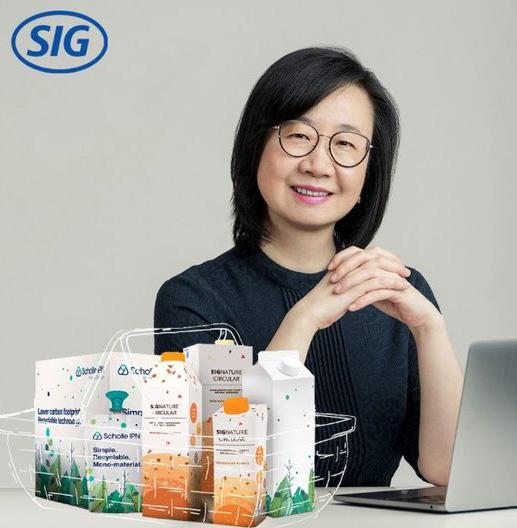
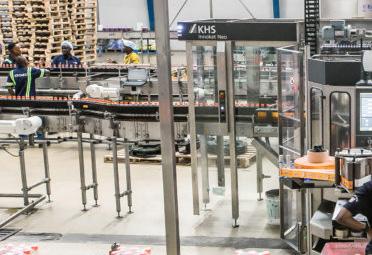
Better conditions and growing demand are generating incredible growth among regional beverage bottlers in Tanzania. This also goes for Watercom – an enterprise that, in just a few years, has invested in not one but two KHS lines for water, soft drinks, and juice.
With persistently high annual growth rates of 5 percent to almost 8 percent since 2000, Tanzania is undoubtedly one of the most dynamic markets in sub-Saharan Africa. Since the state ceased to be counted among the world’s poorest countries a few years ago, it’s been considered politically and socially stable, especially following the accession to the office of President Samia Suluhu Hassan in March 2021.
Unlike her predecessor’s rather authoritarian style of government, she follows a more liberal economic course. She welcomes development aid and foreign investors and has declared war on corruption.
“The Royal Tour, a documentary film and brainchild of President Samia Suluhu Hassan, was filmed to publicise the country’s tourism and investment opportunities. The production has since boosted investment in Tanzania.
The population in this East African country is growing fast, as are the middle classes, specifically in urban regions. This provides opportunities for the food and beverage industries that have been successfully expanding for years.
Several multinational companies are now starting to gain a foothold in Tanzania; however, those who chiefly benefit from this development are the inland conglomerates who are (still) able to divide up the market among themselves.
This is due to political regulation and reluctance to invest in the past. Conversely, this is also because Tanzanian consumers are primarily loyal to local products and brands.
One of the big corporate associations is the Oilcom Group based in the former capital of Dar es Salaam whose main success lies – as the name suggests – in the trade in petroleum
products. Other fields of business include transport logistics and food production.
Since 2005 the family-owned concern has also invested in the booming milk production and processing business: its subsidiary Milkcom works the entire value chain from cattle farming to bottling to the sale of finished dairy products – typical for the high degree of vertical integration in the Tanzanian food industry.
Oilcom added water to its portfolio a few years back through the Afya brand. This market is also enjoying rapid development because – among various other strategies – the government has made its express policy to encourage people to drink clean bottled water to prevent the risk to their health.
No other African country is as much packaged water drunk per capita as Tanzania today. The philosophy of Oilcom subsidiary Watercom, founded for this exact purpose is thus to provide high quality.
This refers to the purity and mineralisation of the actual product and its production process in accordance with common standards. Here, the use of up-to-the-minute high-tech from Europe is considered a unique selling point.
As a general rule, when it comes to technical equipment, multinationals in Tanzania prefer the state-of-the-art – something German engineering companies, in particular, can supply.
“This country is a hugely important market for us,” explains Denise SchneiderWalimohamed, managing director of KHS East Africa. “In the last two years, we’ve sold most of our machines in the East Africa sales region to Tanzania – both big companies and smaller suppliers, more and more of whom are entering the market. PET lines are especially in demand: plastic bottles are the most affordable for local consumers. As is usual in Tanzania, beverage producers want a high level of independence by not only manufacturing the containers themselves but also the preforms or caps, for example.”
Watercom also trusts in the reliability and performance of German machinery. In the search for high-quality technical plant engineering, when adding the soft drinks segment to its range of business activities in 2017, KHS was on board. The Dortmund systems supplier installed the first line for water and carbonated soft drinks. On it, up to 40,000 0.5-litre bottles can be filled in an hour.
The setup includes all components from the syrup room through a stretch blow moulder/filler block and labeller to packers and palletisers. The latter are not so common in the African region as palletising – if performed at all – is usually manual because of low personnel costs and more modest line outputs. As an additional service, the Bottles & Shapes program experts contributed a distinctive bottle design for various formats that uses less material and is considerably helping to boost the brand image.
On course for growth “Cooperation both at the planning stage and during installation, right up to final commissioning, was excellent at all times,” states Salum Nahdi happily, director and CEO of Watercom. “The line performance has us convinced, as does the fact that our expectations regarding efficiency, optimum use of resources, and waste management have been met.”
It thus didn’t take long before KHS was rewarded with a second contract for proving itself to be a reliable partner. A second line practically identical to the first was subsequently ordered in 2020.
In the meantime, Watercom’s portfolio has expanded further: its new fruit juice beverages need a second syrup room and a flash pasteuriser to increase shelf lives. Another difference to the first line is that KHS’ stretch blow moulding technology has evolved further since 201. Its latest-generation InnoPET Blomax Series V is compelling with its intelligent process control, near-infrared (NIR) heater, and simple modular design.
Numerous optimisations also reduce energy consumption and blow air by up to 40 percent. The two KHS sister lines stand side by side – with the practical added advantage that the blow moulds for the various bottle formats can be easily swapped between one line and the other as the production plan dictates.
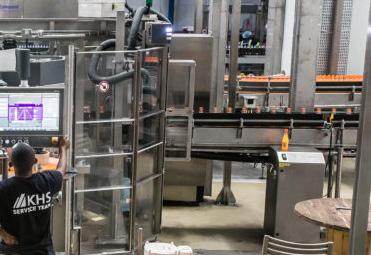
Within the shortest possible time, thanks to investments to the tune of around €100 million, the company has established itself as one of the largest bottlers in the country. On its company premises covering 800 hectares, it now operates no fewer than three water lines and two lines for CSDs and juice – and can claim to be one of Tanzania’s market leaders.
The beverage producer’s future plans for expansion reach far beyond the regional
boundaries: a further production site is planned for the neighbouring state of Malawi, where KHS will contribute the third line.
Regarding after-sales service, Nahdi particularly appreciates that KHS engineers can be on-site quickly should the need arise. This minimises the length and cost of interruptions to operations. His only wish is that spare parts were available more speedily. He’d thus be pleased to learn that KHS plans to extend its local commitment.
“In addition to our site in Nairobi with its over 40 engineers, thanks to the positive development on the market, we’ll soon be setting up a further service hub in Tanzania,” announces Schneider-Walimohamed. “In the future, we can therefore give our customers even better support in after-sales than we already do at the moment.”
The country’s circular economy, with its populace of around 60 million, is still in its infancy, yet the politicians have recognised that they need to rethink and act anew on ecology. Whereas the recycling quota for plastic waste in Tanzania totals just 5 percent, the value for PET is already at 20 percent – and growing.
No deposit system is yet in place, but there are many collection points for used PET bottles that pay collectors by weight. The raw commodity is then sent for reuse to local recycling companies or – as is more often the case – to exporters.
The big food processors and beverage bottlers are increasingly contributing to the collection and further use of their packaging materials.
“The government is committed to various recycling projects together with the National Confederation of Tanzanian Industries and a number of private stakeholders,” says Salum Nahdi. “We now have a market for recycled PET here, with manufacturers of plastic pallets and crates key clients.”
The bottler’s striving to act sustainably includes ecological and social aspects. “We largely procure our raw materials from regional sources,” Nahdi explains.
“By purchasing milk, fruit for our juices or other basic ingredients for our products from the people in the region, for instance, we’re helping to secure their jobs and livelihoods.”
Improved efficiency ratings and an extra boost in effective free air delivery for industrial, healthcare, and food manufacturing, including domestic applications.
Designed to take the lead, BOGE’s already efficient S-4 series compressors have now become even more efficient. The compressor and compressed air systems manufacturer is replacing the existing IE3 motors in its current 110 kW – 160 kW screw compressors with high-performance, energy-saving IE4 motors. In addition to the energy benefits, users will also enjoy lower future CO2 emissions, long-lasting operations, and low maintenance costs.
Applications involving electric motors make up a huge proportion of the overall energy used in the industrial sector. In order to drive the environmentally compatible design of electric motors, promote sustainability and minimise CO2 emissions, the European Union has specified a series of minimum requirements for energy efficiency in threephase asynchronous motors. Consequently, all motors with an output between 75 kW – 200 kW will be required to have an energy efficiency rating of IE4 from July 2023 onwards.
“All screw compressors in the lower performance classes will be modified over the coming months to ensure that BOGE remains ahead of all legal requirements when it comes to the more efficient, environmentally friendly IE4 motors,” says Nalin Amunugama, General Manager, BOGE Kompressoren Asia Pacific.
The energy efficiency of an electric motor is a measure of the ratio between the mechanic power output and the electrical power input. There are currently a total of 5 international energy efficiency classes (IE), which are determined according to standardised measurement procedures, with motors in efficiency class IE1 being the least energy efficient.
“The IE4 motors used to be available as an optional extra in our S-4 series, but they’ll now be available as the standard,” explains Nalin. “Our aim is to achieve energy savings of between 0.6 and 1.5 percent.”
Companies with energy costs in the six figures will find the savings considerable. To illustrate the point – for a 110 kW compressor operating for 8,000 hours/year, a

reduction in electricity consumption of around just 1 percent will result in yearly savings of €1,500 (USD1,481).
Although the changeover to IE4 motors does not affect the overall dimensions of the screw compressors, it certainly improves the effective free air delivery, as this can also be increased by up to 1.6 percent. Ultimately, by using more efficient motors, BOGE is not only helping to reduce its customers’ electricity bills but will also be making a significant contribution to fighting climate change, thanks to the reduced CO2 emissions coming from its devices.
Improving the efficiency of motors and motordriven systems, therefore, plays an important role in reducing ownership costs and slowing electricity demand growth. Doubling the efficiency of new industry motor systems worldwide could reduce CO2 emissions in 2030 by more than a gigatonne.
Governments use IE standards to specify the efficiency levels for their minimum energy performance standards (MEPS), as well as other policy measures.
Of the 57 countries that currently have mandatory industrial motors MEPS, 45 of these, including Singapore, are at the IE3 level. The European Union, Norway, Switzerland, Turkey, and the United Kingdom are transitioning to IE4 levels in 2023 for motors in the 75-200 kW range.
Leading tech start-up aims to provide sustainable, data-driven management tools and insights to thousands of tenants in the leading Philippines mall chain

Manila-based F&B and retail management software Mosaic Solutions has announced a major partnership with the Philippines’ largest shopping centre operator, SM Supermalls.
The agreement will see Mosaic’s advanced software deployed across SM’s chain of 82 malls nationwide, facilitating advanced data insights and automation across a range of business areas, ultimately providing the tools to allow SM and its more than 20,000 tenants to improve their data-driven decision-making and operational efficiency.
Mosaic Solutions is a leading provider of optimisation solutions and cloud-based, allin-one business management systems. The company recently closed a USD 5 million (PHP 282 million) Series A fund led by Kickstart Ventures and Gentree Fund, amongst others.
This latest partnership comes into effect this month at the newly-opened SM malls in Tanza, Cavite and Sorsogon, with further implementation planned in Tuguegarao. Following this, Mosaic Solutions technology will be rolled out to the rest of SM Supermalls nationwide in early 2023.
Mosaic Solutions’ fully integrated, customisable dashboard provides comprehensive performance and trend measurements, which can, in turn, be used to make datadriven decisions to develop and improve services across the entire business. The introduction of the system to SM Malls is a major step in the network’s ongoing digital transformation project. It will also enable more than 20,000 tenants across its network to gain preferred access to Mosaic’s advanced analytics combined with
powerful stock management and predictive analytics tools.
Once fully deployed, Mosaic’s cloud-based system also will enable SM Supermalls to leverage key insights from the data generated across its network. Detailed insights into store performance and consumer behaviour will enable the operator to provide improved service to tenants and customers alike.
“We are excited to partner with SM Supermalls and to provide them with the business management solution they need to have a real-time holistic view of all of their tenant and mall data right at their fingertips. As we roll out across the SM malls in 2023, we also look forward to building stronger tenant relations and helping to drive growth among all the individual retail and F&B businesses in their network,” said Brett Doyle, CEO and Founder of Mosaic Solutions.
“As part of our roadmap for digital transformation in the coming years, Mosaic Solutions will invaluably help our tenant partners with a software system that will let them easily run their stores through a pointof-sale system, robust analytics, inventory management, and procurement processing, all of which are very essential in providing good customer service and continually growing their business,” said Steven Tan, President of SM Supermalls.
Kerry, the world’s leading taste and nutrition company, has launched a unique tool to raise awareness of food loss and waste. It calls for collective action in tackling food security. Kerry’s Food Waste Estimator, which was announced to mark the UN International Day of Awareness of Food Loss and Waste Reduction, allows consumers and manufacturers to quantify and understand the financial and environmental impact of reducing food waste in the food chain or the home.
With the UN estimating that a third of all food is wasted, the combined effort of consumers and manufacturers to reduce food waste can significantly impact creating a more sustainable food ecosystem. It will be critical in solving the increasing global challenge of food security.
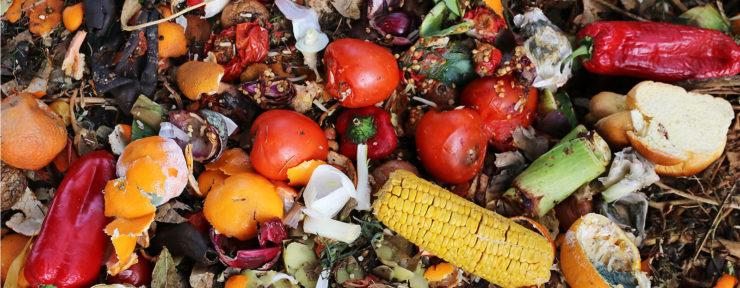
Kerry’s innovative new estimator uses just a few simple inputs to inform users about the impact that reducing food waste can have on our planet. It provides information on the number of additional people that could be fed and the amount of carbon dioxide and water saved by making simple changes to reduce food waste.
Too Good to Go, the world’s largest food-saving app, provides useful food waste reduction tips for consumers within the estimator.
In addition, the estimator enables food manufacturers to determine the impact they can have in reducing global food waste by using shelf-life extension technology across their portfolios. Research has shown that
approximately 50 percent of consumer waste could be prevented via shelf-life extension technologies – a saving which would meaningfully reduce world hunger.
Bert de Vegt, Global VP for Food Protection & Preservation at Kerry, said:
“Today is a reminder of the precarious global situation of food security. We all need to act, and as an industry, we must take immediate action in eradicating food waste within the food system through new technology and innovating together. While Kerry partners with manufacturers to extend the shelf-life of products, it is important to remember that individual actions at home can also have a big impact. If the world reversed the current trend of food loss and waste, we could protect enough resources to feed three times the amount of undernourished people on the planet today. Our new tool provides simple but actionable insights for both consumers and the food industry and shows the real impact that shelf-life extension technology can have on food products.”
As the market leader in conventional and clean label preservation, Kerry understands shelf-life protection and extension to be the most actionable method in managing food waste in the home and supply chains.
It has pioneered breakthroughs in the highest food waste categories of bakery and meat, including patented plant-based curing agents and nitrite-free solutions for listeria inhibition, innovative vinegar-based solutions for clean taste in low pH bread applications as well as solutions for process and heat treatment replacement in beverages.
With the broadest portfolio of preservation technologies in the industry, each year, Kerry extends the shelf-life of over 34.5 billion loaves of bread and 43.5 billion servings of meat globally.
Kerry’s technologies support the reduction of food waste through fermentation, vinegar-based ingredients, plant extracts and enzymes, alongside conventional organic acid-based preservatives like propionates and acetates. Taking a holistic approach, the company also supports manufacturers in creating a more circular flow of resources, repurposing products that would otherwise have ended up as waste. For example, spent coffee grounds are used for authentic coffee flavours and proteins are converted into biofertilisers through fermentation.
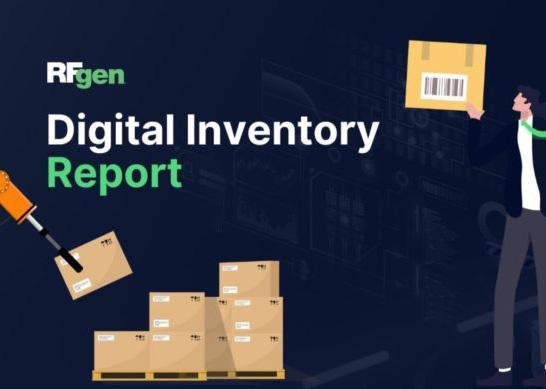
Inaccurate inventory data and over/understocking inventory are top challenges for survey respondent
Today, RFgen Software, a leading provider of mobile barcoding and data collection solutions, released its first annual Digital Inventory Report, an in-depth research survey of supply chain industry professionals, to gauge the current state of the industry. The survey was conducted from March through June 2022 and revealed mixed results related to inventory automation, inventory management challenges, cloud migration, the future state of the industry and more.
“Our first-ever Digital Inventory Report highlights an excellent variety of data from inventory management professionals at enterprise companies in North America across a wide variety of industries,” said Jerry Touslee, Vice President of Marketing at RFgen. “This report is a beneficial tool for any professional or company with a need to track inventory both inside and outside of the warehouse. It provides real insight and key indicators to help guide decision-making and investments regarding inventory management technology.”
The Digital Inventory Report highlights several key findings from respondents, including:
• Lack of trained staff is the most significant challenge for implementing digital inventory technologies
• Half of the industry is already in or planning to move to the cloud
• Nearly 9 of 10 respondents expressed concerns over IT security
The report also pulled data highlighting the industry’s future state, where many respondents reported they are considering future expansion of their mobile supply chain management. “The findings from the Digital Inventory Report create an impact for RFgen customers and future customers, as well as the industry at large,” said Linda Gilbert, Director of Professional Services at RFgen. “Our customer consulting teams can now add specific industry insights to our already high level of service and product delivery.”

Körber, the international technology group, today announces an Asia-focused distribution agreement with Attabotics, the world’s first 3D robotics supply chain company. Körber will provide companies across the Asia Pacific region with integrated logistics systems equipped with Attabotics’ patented storage structure and robotic shuttles that save warehouse space by at least 85 percent.
Through this partnership, manufacturers across multiple industries, including e-commerce, food & beverage, beauty & healthcare, retail, and electronics, will gain access to Attabotics’ unique supply chain system. Attabotics provides a robotic warehousing and fulfilment system that condenses typical warehouse aisles into a single, vertical storage structure. The company specialises in 3D robotic shuttles that travel both horizontally and vertically, unlike groundbased Autonomous Mobile Robots and Automated Guided Vehicles (AGVs).
Customers enjoy faster picking and shipping times with Attabotics’ all-in-one fulfilment system, which maximises the speed and flexibility of warehouse processes. The system’s reduced footprint allows businesses to build their warehouses in high-density areas.
Win Thian CHAI, CEO of Körber Supply Chain Asia, said, “Attabotics is a fast-growing, technology-focused supply chain company, and we are very pleased to expand our partnership with them to include Asia, where businesses are increasingly automating their picking and order processing processes. Establishing a deeper relationship with Attabotics helps us to continue paving the way towards a future where every manufacturer has a flexible, reliable, and efficient automated warehouse system.”
In the natural world, animals and plants react to changes in their environment with a set of programmed responses – fight or flight, freeze or flee, etc. Human beings also respond to their environment but not always rationally. The response of adding sugar to everything possible is indicative of how we respond to our environment.
The effects of sugar prices on goods and services mean more than just watching your calories. The sugar cost directly impacts what you pay for coffee at home and bottled drinks while you’re on the go, the price of baked goods from a local bakery, and anything else that uses sugar as an additive or primary ingredient.
To understand how sugar prices have impacted the global economy, we asked Michelle Lee, Regional Marketing Leader, Greater Asia at IFF, for her insights.
Will including sugar levels in beverages and penalizing manufacturers help curb consumers’ sugar intake?
Consumers today are taking greater ownership of their health, pursuing healthier lifestyles and diets. In Asia, for example, consumers are placing greater emphasis on tackling diabetes, weight management, and immune health. In a GlobalData survey of 10 Asia Pacific
markets, four in five said they were taking steps to cut sugar consumption1.

As changing health priorities are already driving more consumers to avoid or moderate their sugar intake, policy tools such as sugar taxation and nutrition labelling will serve to hasten this momentum. This means helping consumers make better-informed decisions about what they consume, as well as encouraging F&B manufacturers to create healthier products.
Take Singapore as an example. According to the latest nutrition survey by the Singapore Health Promotion Board (HPB), there has been an improvement in the nation’s quality of diet, with many consuming fewer calories and more fruits and vegetables but also substituting saturated fats with unsaturated ones2.
However, Singaporeans were still consuming a high amount of sugar and salt – some one million locals would have diabetes by 2050 if no further action were taken3. As part of wider national efforts, it was recently announced that drinks in Singapore would be required to carry a nutrition label with a nutri-grade rating from A to D, with D being the unhealthiest, by the end of 2022. This would need to
specify total sugars, amongst others, so that consumers were made aware of the energy value and contents within the said beverage.
Asia has seen a significant rise in no/low/ reduced sugar beverages launched in the last five years. Consumers ultimately want sugar-moderated products that don’t compromise on taste. We, therefore, work closely with our customers to innovate and design products that maintain a level of sweetness without carrying off-notes and texture and mouthfeel that is often removed when sugar is reduced.
What possible sugar substitutes are there in the market which don’t compromise the health and nutrition of consumers? There are several sugar substitutes available in the market today, such as artificial and natural sweeteners, that maintain not only the same sweet intensity of sugar but also provide additional nutrients or functional benefits.
IFF supports food and beverage companies to develop sugar-reduced, low sugar and no-sugar-added products that are also tasty, innovative and with added health benefits. IFF has a range of solutions across multiple categories, including beverages, that deliver all the
How can manufacturers provide consumer-based goods while staying on top of the global economy
taste while containing no or low sugar content.
What do you think are the challenges that manufacturers face in terms of reformulating product ingredients without depleting them of the essential nutrients?
Consumers are actively looking for healthy products that are low in sugar content. One of the main challenges that manufacturers face is to make betterfor-you beverages taste good while staying true to the promise of a healthier product. For instance, active ingredients can be added to beverages to make them healthier. However, 80% of these ingredients have off-notes that put the taste out of balance.
Sugar delivers more than just sweetness but also affects the overall taste, texture, mouthfeel, and visual appeal. So, from a technical point of view, sweeteners cannot be simply replaced. A holistic approach to product design is the key to success. Manufacturers need to focus on the whole
recipe, taste, and texture to differentiate a product.
To address the taste challenge, we provide upfront sugar-like profiles and flavour enhancements while avoiding bitterness and other off-notes. As for texture, we fill the gap when sugar is taken out by inserting a syrupy body with excellent visual appeal, flavour release and stability that enhances its shelf life.

Do you think sugar substitutes can address the global sugar shortage and eventually lower its distribution price?
Leveraging sugar and taste modulation solutions could mean that food and beverage companies would rely less on sugar and shift to alternatives that meet the needs of consumers today. For example, we employ beverage modulation technologies and the IFF PRODUCT DESIGN™ approach. This not only ensures that taste is not compromised with sugar reduction but also promises a certain level of recipe productivity and efficiency in product conceptualization.
What projects or research does IFF do to make this possible?
Using the ‘Enhanced Water’ market as an example, we know that Southeast Asian consumers prefer a ‘clear’ coloured water beverage4 with functional benefits such as immunity support and low / no sugar claims. For flavours in ‘Enhanced Water’, in 2021, we saw a 47% year-onyear growth for herbs and spices and a 21% growth for citrus flavours.5 We understand that beyond hydration, water can be a functional and natural beverage.
To meet the consumer’s perception of water and taste preferences, we use IFF’s modulation technology to deliver zero sugar in the functional water with other nutrition ingredients – therefore designing a delicious, functional beverage that consumers love.
Lee further adds that producers and manufacturers should look at solutions that meet consumer demands while staying in line with the government sugar mandates. She stresses the importance of working with like-minded companies that have long-standing experience in flavour and ingredient development “to create essential solutions, from concepts to successful commercialization.”
References:
1. GlobalData 2021
2. https://www.channelnewsasia.com/ singapore/healthier-sg-less-sugarsalt-sodium-diet-hawker-centresnutrition-2996756
3. https://www.straitstimes.com/ singapore/health/spore-makesprogress-in-war-on-diabetes-butobesity-insufficient-physical-activity
4. GlobalData Q2 2021 Consumer Survey Results
5. GlobalData Enhanced Water Flavor consumption
Michelle Lee is the Regional Marketing Leader, Greater Asia in IFF. She has close to two decades of experience accumulated in extensive marketing, innovation and R&D experience in both FMCG and B2B businesses. In her current role, she is responsible for regional marketing directions and initiatives focusing on creating business opportunities and identifying growth platform for all the industries.
Michelle holds an MBA in Strategy Development from University of Strathclyde, United Kingdom. She obtained her MSc. Health Science (Clinical Nutrition) with National University of Malaysia, where she researched human clinical studies on the effects of antioxidants health benefits and continued the research in University of Oslo, Norway. She possesses BSc. In Food Science and Nutrition from National University of Malaysia.

Is digital disruption the answer?
The pandemic and the regional events dramatically impacted the supply chain for the Asian F&B industry. It doesn’t help that there has been an increasing trend of resource nationalism, such as Indonesia banning the export of palm oil, India stopping the transport of wheat, and Malaysia restricting the exportation of poultry.
It’s even more concerning as climate change and environmental issues, including weather disturbances, pest infestation, crop failures, and food safety, are making it hard for Asian countries to supply food to their consumers.
Geopolitical risks also contribute to the uncertainty plaguing suppliers, manufacturers, and consumers.

Given these different factors, food prices have escalated. In March 2022, the global food price index hit an all-time high, particularly for dairy and vegetable oil prices. While prices have dropped this October, there’s still the threat of increasing labour costs and freight fees –as we are still reeling from the effects of the pandemic. The burden of these rising
costs will eventually fall into the hands of the consumers.
Malaysia, a major food exporter in the region, showed food inflation of 4.1 percent year-on-year increase in April of this year. Singapore is no different, posting a similar annual food inflation, outpacing other Asian regions as it exceeds the 3.3 percent core inflation increase.
Key supply chain challenges These food price increases can be attributed to the following factors:
• Shortage of raw materials
• Constraints in logistics
• Demand for alternative packaging
• Health risks due to food contamination
• Supply chain disruption for both domestic and international logistic provisions
Interestingly, these challenges were mainly because these processes are still manual in nature. Despite the digital revolution, many food and beverage
companies still rely on legacy systems. They track their process from source to shipping by pen and paper recordkeeping. With this practice, they’re missing out on tons of opportunities.
Tech entering the scene
With all the inflationary issues surrounding the food and beverage industry comes the promise of solutions with technology. Technology is changing the landscape of the supply ecosystem. In this space, a collaborative effort among manufacturers, suppliers, and consumers plays a critical role.
Transparent and inclusive processes from the whole spectrum of the process cycle. ”
Higher connectivity among parties involved - fostering a stronger sense of ecosystem creation. Each of the participants in the supply chain is empowered to control the information they want to share with full transparency. For example, when a producer ships to a distributor, they are able to get necessary shipping info
Can technology finally address the supply chain disruption in the F&B industry in Asia?
instantaneously without going through further verification, as the Web-3 tech will authenticate automatically with 100% accuracy,” shares Lester Chan, CEO and Founder at The GrowHub (TGH), Asia Pacific’s only Web 3-enabled technology plug-and-play ecosystem builder focusing on food traceability and carbon credits.
Chan explains, “A retailer would be informed of any defective product batches without delay via Web-3 directly from the producers without the need to go through the distributor. Web-3 also ensures the privacy of customers as no personal details of the customers can be accessed without their approval. The collaboration can also be scaled up efficiently at a relatively low cost with Web-3 technology. The overall impact is that information can be exchanged instantaneously, securely, and widely via Web-3 technology without the need to individually check whether the requester is trustworthy.”
Josephine Ong, Managing Director for Asia Pacific South at Dassault Systemes, shares, “We see the supply chain as an ecosystem – there’s a lot of actors involved. There’s a very complex interaction going on, and information is exchanged at every step of the process within this supply chain ecosystem, so we’re talking about supply and demand, not just the buy and sell, but also trying to look at alternatives, right?”
This complexity is often the reason why there are breaks in the supply chain sector.
Ong further explains, “If you’re not able to trace information at each step of the way, you won’t be able to track basically where you are in the process. So, then that gets even more complex. And so, access to information and insights across this ecosystem is very important.
When you have traceability, you’re going to be able to have visibility, so you’ll be able to identify where the bottlenecks are, where you might have certain lower inventories, and where you should be starting to swap out or maybe forecast ahead of time, when you need to swap to a different supplier, for example. ”
traceability likewise eases supply chain bottlenecks.

Chan shares, “Blockchain is emerging as a fast-developing technology to speed processes where trust is required in all industries. Each block is interconnected, making it almost impossible to tamper at once, which requires a hacker to change all blocks to avoid detection. Consumers are able to trace a producer’s claim indepth, and producers are able to provide
authenticity. The product’s location can also be understood on a real-time basis, helping the producers in demand forecast, unintended gray imports, and recovery efforts in the event of contamination.”
Small-scale adoption and scalability However, it doesn’t mean it’s easy for all to adopt this collaborative technology. For small businesses and producers, innovation remains a herculean task. More than that, actual integration can be difficult. Ong explains that data remains in silos. Stakeholders struggle to exchange ideas and systems. “Manufacturers and suppliers - they’re all using different technologies. Oftentimes, even though they are buying and selling from each other or they’re doing business with each other, they don’t interconnect their systems.”
“In some cases, businesses don’t even use any form of tech. They rely on paperbased processes. And so that gets really complicated when it comes to
collaboration in an ecosystem because you can imagine some people are talking through maybe WhatsApp, and then someone else has got stuff in the system. Nothing kind of connects. There’s a big, you know, it’s a big chiasm,” Ong adds.
This scenario happens because innovation can be costly for small players. “This is where ecosystem builders like us can play a significant role. TGH partners with institutions across the region in making Web-3 available for smaller food manufacturers and producers. For example, we recently partnered with Tangobar in Japan to make Web3 technology available to local food producers in the Kyoto region so they can connect with consumers and understand how their products can penetrate the ASEAN market. The system is also modular – to empower companies to select what they require suitable for their stage of growth and specific needs.”
For Dassault Systemes, Ong shares that their company is helping businesses to connect their processes by not only improving manufacturing but connecting the different parts of the ecosystem “We’re connecting ideation to production, to distribution to marketing. We’re not limited to the supply chain only. We’re also talking about R&D, how they want to formulate the product to the actual manufacturing of the product, and then talk about marketing.”
Addressing the supply chain disruption in Asia and the Pacific

The Web-3 scene in Asia is still in its infancy. Even many tech-aware companies are yet to understand the scope of this new tech fully. But it’s well on its way towards expansion and widespread expansion thanks to a flexible regulatory framework and solid governmental support. TGH sees a good future for Web-3 and tech adoption in Asia. Chan shares, “The Asian market is made up of mostly young, tech-savvy population who are adaptable and passionate about digitalisation. In Singapore, there is a presence of 400 blockchain-related start-ups. While these are mostly related to fintech and payments, there is a huge potential for the broader application of Web-3.”
Chan is positive that adoption will grow once businesses understand Web-3 benefits, including efficiency improvement and cost reduction across the supply chain. We can expect positive growth, mainly since Web-3 allows the integration of advanced interaction models, including AR/VR use.
Ong echoes the same sentiment. “We’ve
got quite a few clients in Asia that have already adopted technology to improve their productivity you. We’ve got, for example, the largest instant noodles manufacturer in South Korea. They have used technology to help in their R&D process, mainly in the acceleration of new product introduction.”
Ong reiterates that technology is actually making a huge contribution to leveling the playing field. “You know, how easy is it for startups to adopt technology because it’s going to be costly for them? And it is somehow the fundamental enabler for innovation.”
Ong adds, “That’s kind of the premise of our 3d experience lab. We really want to help startups kind of break the frontier when it comes to thinking out of the box. So we do have an accelerator program for startups. In particular, for the agri-food startups, we do have a program to help them in their innovation process, not just r&d, but also lab to pilot scale, for example. There is also a startup offer, specifically for the novel food industry. For agri-food companies who wish to accelerate their innovation process and protect the IPs. We’re extending our portfolio of software
to help them with that.”
Tech and the F&B industry beyond the supply chain disruption The future looks bright when it comes to applying technology in addressing supply chain woes.
Chain shares, “Having better data enables companies to respond more timely to market needs and reduce the uncertainty of production and logistics, thereby reducing the volatility of prices they are able to charge consumers.
Ong states, “The market is very volatile today, and there’s a lot of work to do to increase efficiency and cost containment. It will take a while for the rest of the market to catch up. But it doesn’t mean that you can’t start today because there are technologies today that allows you to do that allow you to simulate or make decisions in a virtual environment.”
With insights from Lester Chan, CEO and Founder at The GrowHub (TGH) and Josephine Ong, Managing Director for Asia Pacific South at Dassault Systemes.
The performance of metal detectors in food product inspection can sometimes be compromised by what is known as the “product effect.” But what is the product effect? What causes it? How can food manufacturers tackle it? Rob Stevens, Market Manager, Mettler-Toledo Safeline Metal Detection, has the answers.
There is a misconception in the food manufacturing market that the product effect – i.e., the phenomenon in which metal detectors are falsely triggered by the characteristics of the product itself – is simply caused by “wet” products or those with high moisture or salt content.
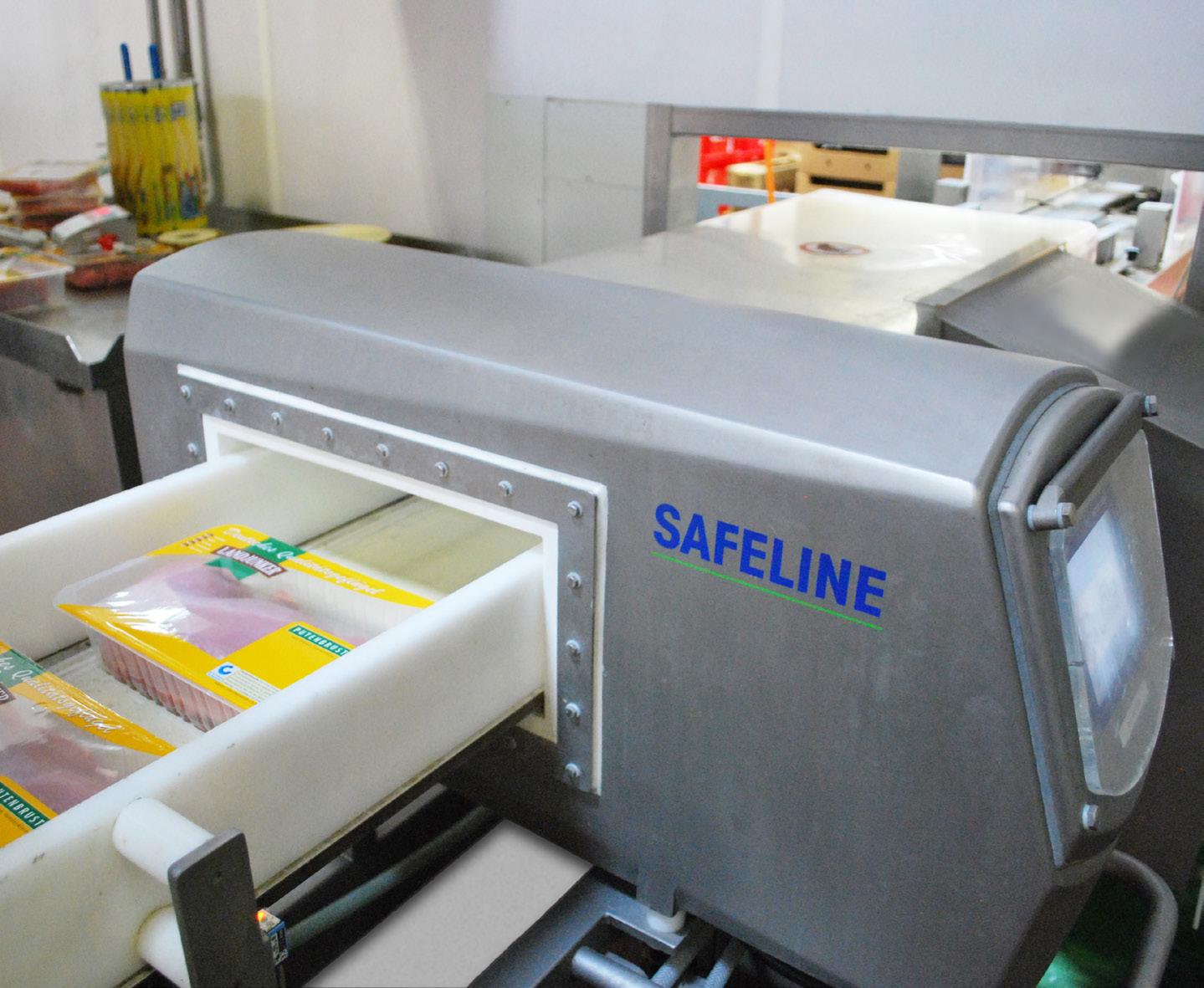
While “dry” products, such as bags of flour, will not cause a false trigger. It is true that wet products, as defined, are more likely to cause this product effect, leading to less effective metal detection, but other factors, as we shall see, can contribute too. On the factory floor, this means that products that might be identified as contaminated by the metal detector are unnecessarily rejected, which is a waste of good products.
The product effect happens when a metal detector’s magnetic field is disturbed
while inspecting a product. The magnetic field can be disturbed not just by metal particles (i.e., an actual metal contaminant) but by other magnetic or electrically conductive aspects of the product and the environment. Receiver coils in the system pick up the interference in the detector’s magnetic field and are then evaluated by the metal detector. If the signal sent out by this magnetic interference is sufficient, the detector will consider it has found a contaminant and the product will be rejected.
Clearly, this compromises the performance of the metal detector. Its job is to detect metal contaminants, yet other factors which are not contaminants are causing a disruption to its operation and costing the manufacturer profits due to good, uncontaminated products being thrown away.
Food manufacturers need to understand the causes of the product effect phenomenon to tackle it better.
Let’s look first at the different causes of product effect, which can be divided into two separate categories:
Moisture or salt content (i.e., “wet” products), temperature, size and shape, consistency and density can all contribute to product effect.
Moisture or salt content – although neither moisture nor salt content causes as strong a disturbance in magnetic fields as that initiated by most metals, it is generally enough for some interference to take place, thereby disrupting the performance of the metal detector. Without a doubt, this is a major cause of product effect, and most manufacturers are aware of it. However, the matter is complicated further by the fact that moisture or salt levels are typically not consistent from one pack to the next. To use beef as an example, from one animal to the next, from one cut of the joint to the next, there can be significant variations in moisture and salt content. Marinated products can also affect metal detector performance inconsistently.
Temperature of the product – not only does temperature affect the interference
a product can have on a metal detector, but the product effect itself is also under continuous change as temperature changes. For example, a deep-frozen product, generally below -18 °C, has almost zero conductivity, but as it begins to thaw and condensation forms, its conductivity changes. Therefore, the signal generated by a chilled product is much altered from that generated in its frozen state, and the product effect as it passes through a metal detector is significantly different.
Size and shape of the product – a consistent product signal is emitted by by-products that are uniform in shape and size (discounting the other factors discussed here). Many packaged products have good uniformity, but this is not always the case. For example, a conveyor belt full of whole fresh chickens will not have this uniformity. There will be variations in size, shape and weight. Typically, the larger chickens will give a stronger product signal than the smaller ones. The product effect is, therefore, inconsistent and unpredictable.
Consistency and density of the product – ready meals are a great example. They are usually composed of different food substances with different density and consistency properties. The ratios of each element can also be variable from pack to pack.
This presents a big challenge in product inspection, as these variations lead to inconsistent product signals during metal detection. Even within the same ingredient, there can be variations in consistency and density. An example is bone content in meat: the amount of bone will probably not be homogenous throughout a batch
of products or even from one pack to another. Possible complications in metal detection, caused by product effect, are the result.
Position and orientation when going through the detector – inconsistent position and orientation of products on the metal detector’s conveyor belt influence product effect. For example, a different signal is given to the metal detector if a rectangular product passes through with its short edge leading instead of its long edge.
An understanding of metal detection operation also throws light on the importance of product positioning. Products passing through the centre of a metal detector’s aperture are going
through the weakest part of the magnetic field. Therefore, any product effect relative to the magnetic field is greater. The magnetic field is strongest at the sides, so the impact of the product effect here is different again.
Packaging material – packaging made from metallised film (typically, a thin aluminium coating on plastic material) can have high conductivity and, therefore, the potential for significant product effect. Also, the same specification of metallised film from different suppliers will produce varying product effect results.
Inspecting the products for metal contaminants before they are packaged is one solution. However, products packaged in metallised film can still be effectively inspected using an advanced metal detection system using multisimultaneous technology.

Rob Stevens is the Market Manager for Mettler-Toledo Safeline Metal Detection, supporting several territories with the sales and service of metal detectors. Rob has a degree in Manufacturing Engineering and many years of experience working with various engineering companies, including Siemens, Rolls-Royce and others around the world. Rob has worked in the food industry internationally, providing solutions to some of the world’s biggest food producers.

In recent decades, food systems have delivered major human development benefits through massive increases in productivity. Yet, today’s systems are no longer fit for purpose as we battle mounting hunger and challenges around obesity. Food systems are currently failing to deliver healthy diets, whilst at the same time bearing high hidden costs - amounting to some $12 trillion each year1 - and having a detrimental impact on our environment. They generate about 1/3 of global greenhouse gas emissions and are the single largest contributor to biodiversity loss.
At this year’s UN Climate Change Conference in Sharm el-Sheikh, we’ll see the first ever Food Systems Pavilion. It is a positive recognition of the need to relook at how our current global food systems operate, and an opportunity to develop actions and solutions to create more sustainable and resilient food value chains.

As world leaders, governments, businesses, and changemakers gather for COP27, the focus needs to be on how system thinking, science-based decisions and collaborative innovation can help drive the decarbonisation of food systems for
the achievement of the Paris Agreement goals.
Moving from discussion to implementation isn’t enough. A long-term, collaborative approach needs to be at the heart of all pledges, initiatives, and agreements to make this transformation happen. We need to reinvent how we source, produce and process our food, its transportation and the materials we use to package it. Examples of positive change is in the preservation of the world’s biodiversity as well as reducing our reliance on carbonheavy materials, processes and sources of food.
Protecting and preserving our ecosystems
Biodiverse, healthy ecosystems provide us with oxygen, regulate weather patterns, pollinate our crops, and produce our food, feed, fibre and essential raw materials –all of which are at serious risk if we fail to act with speed, impact and scale.
According to the World Economic Forum, half of the world’s GDP is either moderately or highly dependent on nature – equivalent to $44 trillion2. Biodiversity in our soil, crops and animals must increase to improve the food system’s resilience to
external shocks and enhance long-
term food security. And this is best achieved through responsible sourcing practices and strategic partnerships.
It is crucial for private sector companies to seek external expertise and skills, to guide restoration and, in turn, enhance credibility and visibility of their social responsibility. In 2022, we launched with Brazilian NGO, Apremavi, the Araucaria Conservation Programme, a pioneering land restoration initiative in Brazil.
The project intends to restore up to 7,000 hectares of land – equivalent to 9,800 football pitches – by 2030, to protect biodiversity in the region and generate positive economic and social benefits for the local communities. Apremavi, which has extensive experience in conservation and restoration projects, is helping us target an area of particular risk, the Forest of Araucarias, which today only has 3% of its original area preserved. It’s one example of how a company with a global reach can work with a local partner for the benefit of many. As part of the pilot, we have already planted 38,000 seedlings of native trees – including araucaria, maritime pine and mountain guava.
Packaging plays a vital role in protecting food, while helping to reduce food waste and improve access to nutrition even in remote areas of the globe. However, materials for packaging alone cause more CO2 emissions than global aviation preCOVID. If we do nothing, the sourcing and processing of packaging materials will account for nearly one third (~32%) of all global greenhouse gas (GHG) emissions by 20503. Focusing on an innovation pathway driven by renewability and recyclability is key.
At Tetra Pak we are already on this journey. In 2021 alone, we sold 17.6 billion plantbased packages4 and 10.8 billion plantbased caps, which saved the equivalent of 96 kilo tonnes of CO25, compared to fossilbased plastic. More recently, we have tested a fibre-based barrier replacing the thin aluminium layer in our aseptic cartons, a first for food carton packages under ambient conditions. Early results suggest that the package with a fibre-based barrier will offer substantial CO2 reduction when compared to traditional aseptic cartons, while being more attractive for paper mills; thus, this concept presents clear potential for realising a low carbon circular economy for packaging.
While negative sentiment around packaging has vastly increased in recent years, many still fail to grasp how protecting our planet and contributing to food security go well beyond innovating ‘solely’ in this specific area. We need to take a holistic environmental approach,
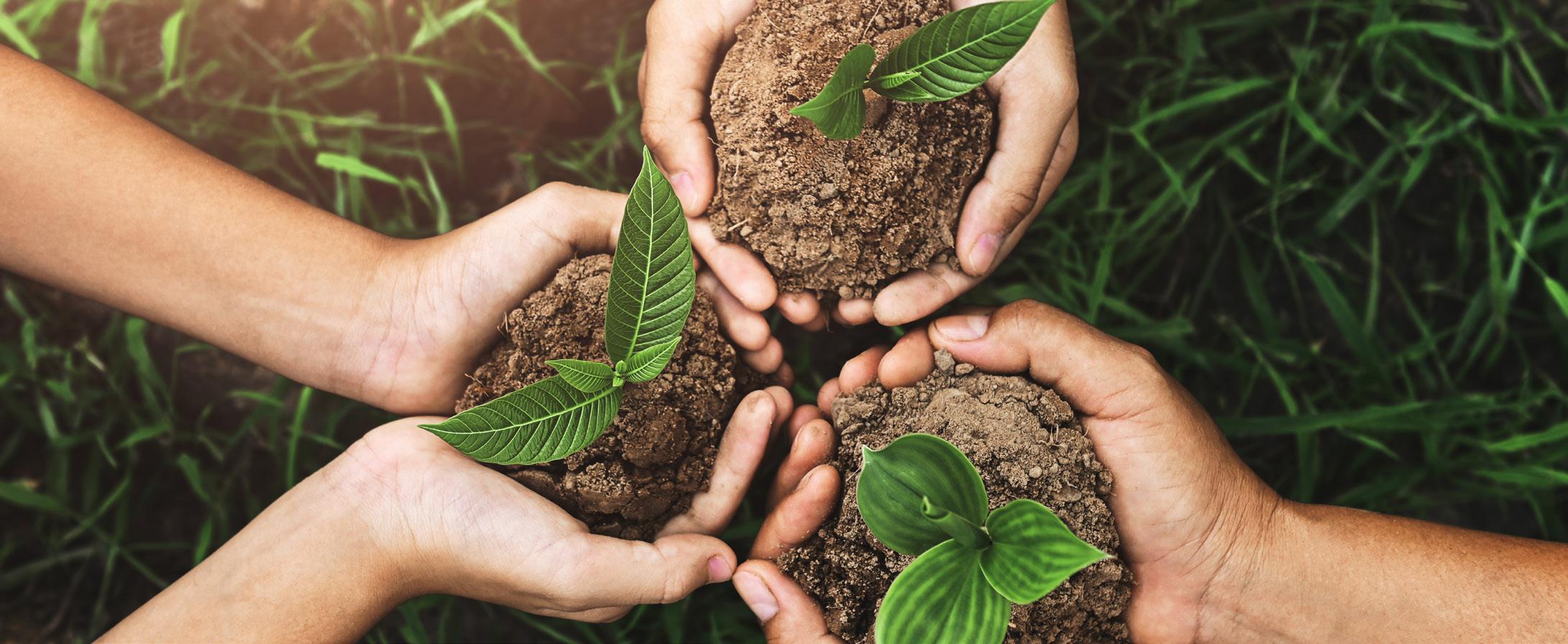
one encompassing all steps between food sourcing and end of life. Here, Tetra Pak is partnering with several innovative companies, such as Swedish start-up EnginZyme, to transform potential food waste into sources of nutritious food. In addition, we recently joined forces with Mycorena to build a greenfield production facility for fungi fermentation. Along with a lower carbon footprint, alternative protein-based food applications proteins offer scope for significantly reduced land and water use, compared with traditional sources. We are also working to reduce the biggest chunk of GHG emissions across our value chain, generated by processing and packaging equipment operating at our customers’ sites. We have committed
to halve food waste, water consumption and carbon footprint in our best practice processing lines by 2030 compared to 2019.
While the preservation of ecosystems and decarbonisation are pressing issues that require the industry’s full attention, we must go even further. As a global company with thousands of suppliers around the world, we have an opportunity – and a responsibility - to promote responsible sourcing practices. We believe that collaboration is key to driving sustainability across the supply chain. All of this combined is paramount to conserving and restoring biodiversity, while advancing in our net zero journey. The risk of inaction today is a world we won’t recognise tomorrow.
That’s why we’re excited to be part of
Sweden’s COP27 Business Delegation this year, using our global footprint and food industry expertise to accelerate actions and enable a shift towards resilient and sustainable food systems and healthier diets. Our progress depends on being able to embrace a mindset which drives both growth and sustainability for a better future.
Tisserand Vice President Sustainability Climate and Biodiversity Tetra PakGilles leads a multicultural and multidisciplinary team that provides actions and solutions to meet the company’s netzero trajectory, including the reduction of carbon emissions, the development and roll-out of a sustainable product portfolio, the responsible sourcing of materials and the restoration of biodiversity.








